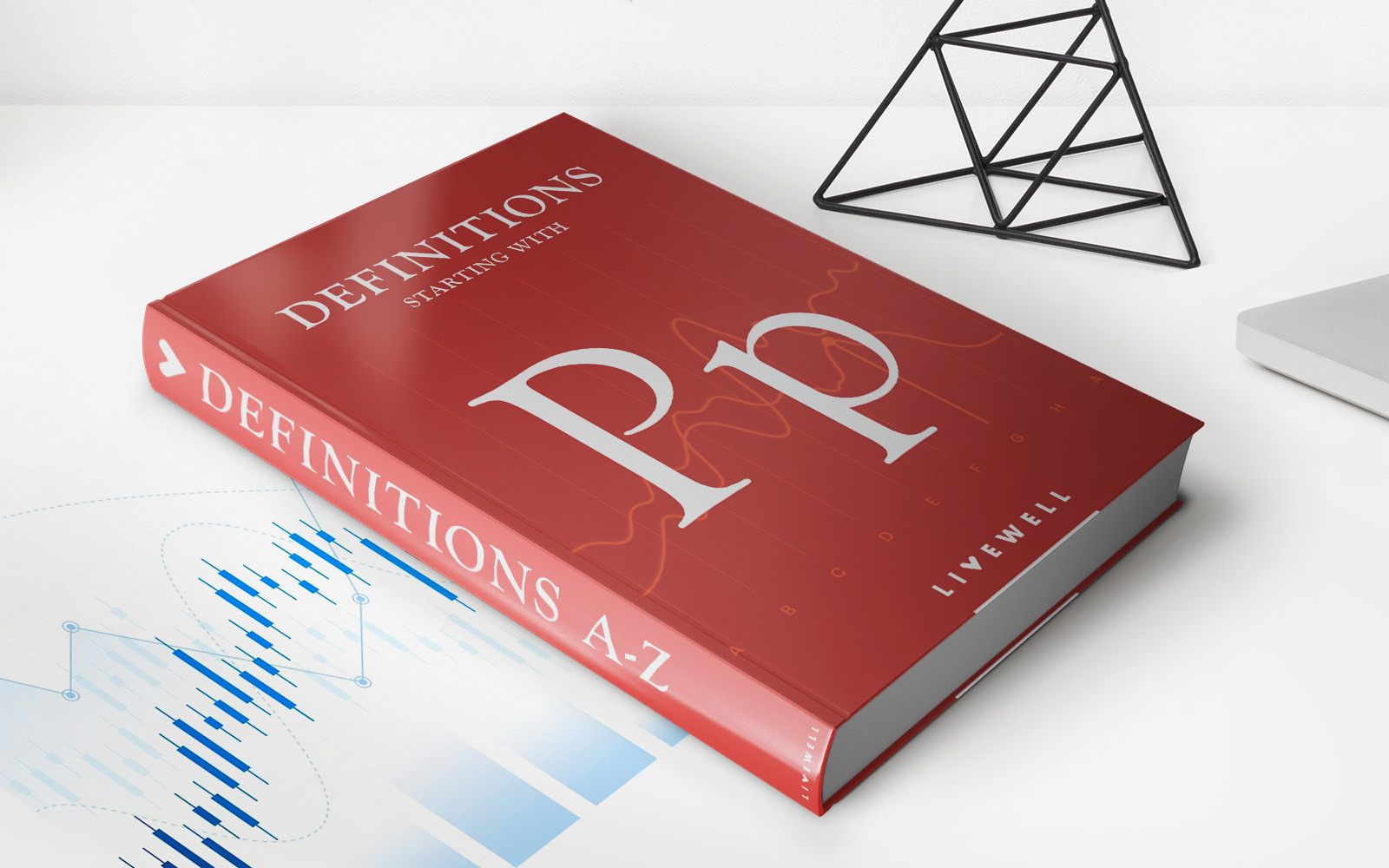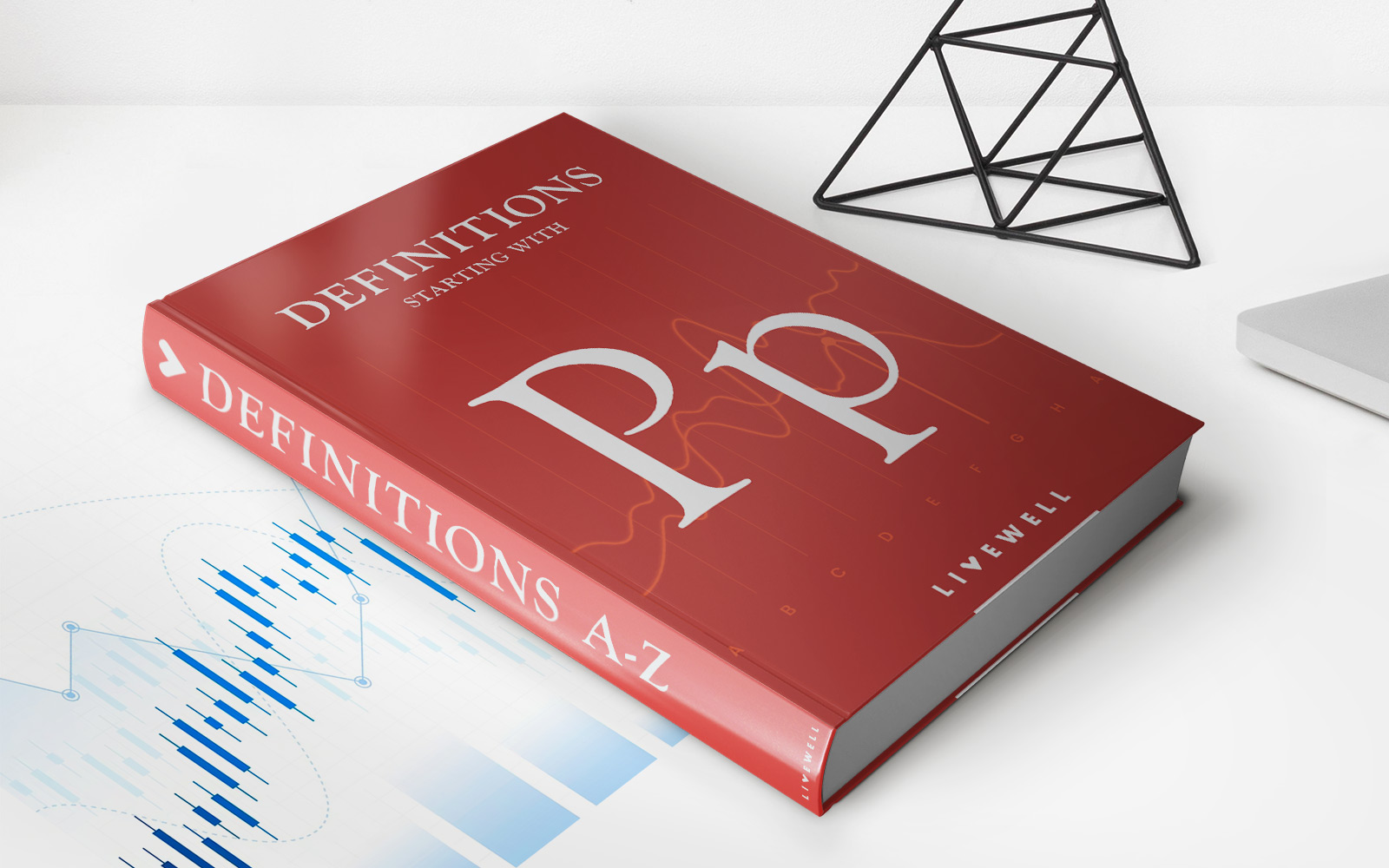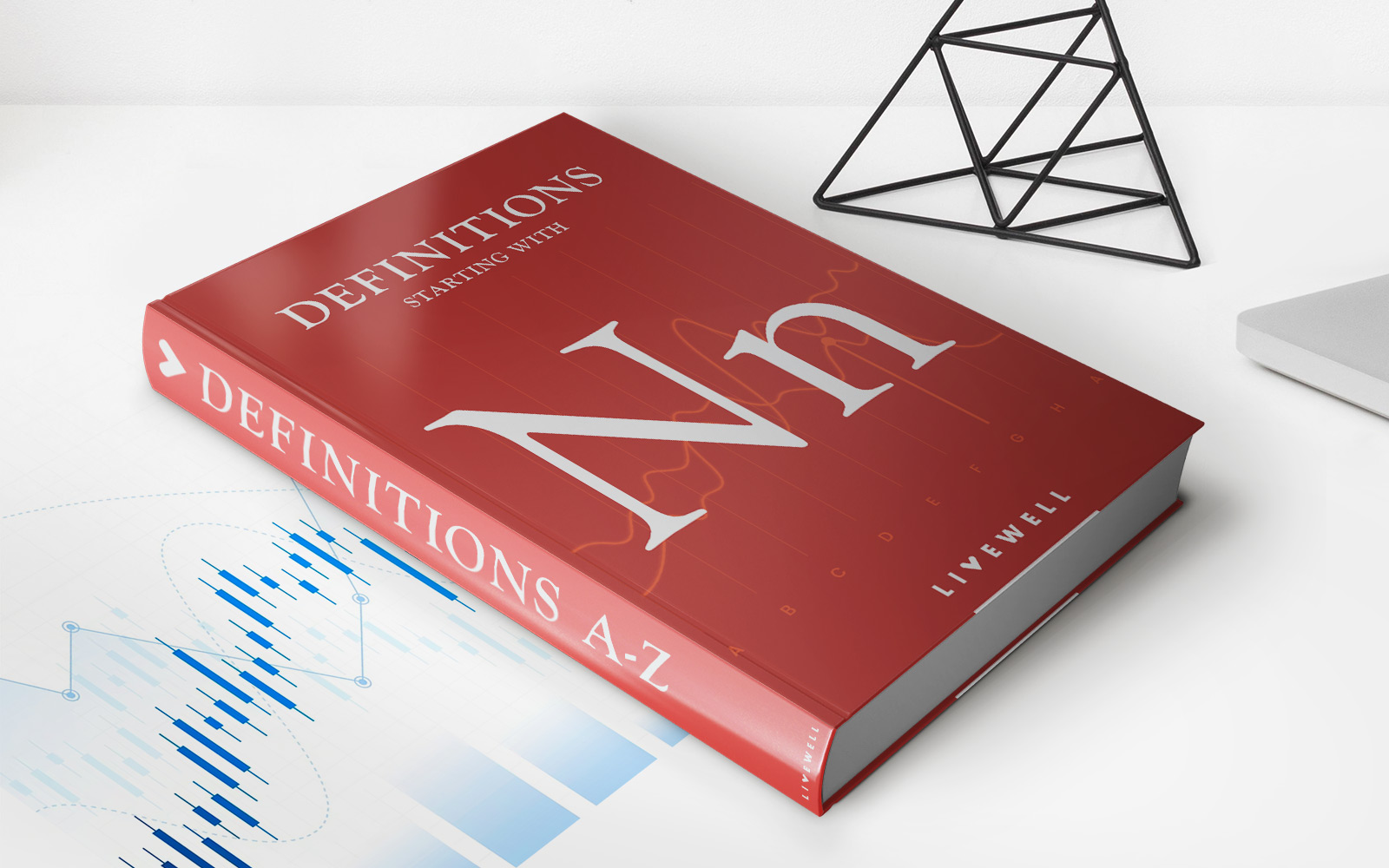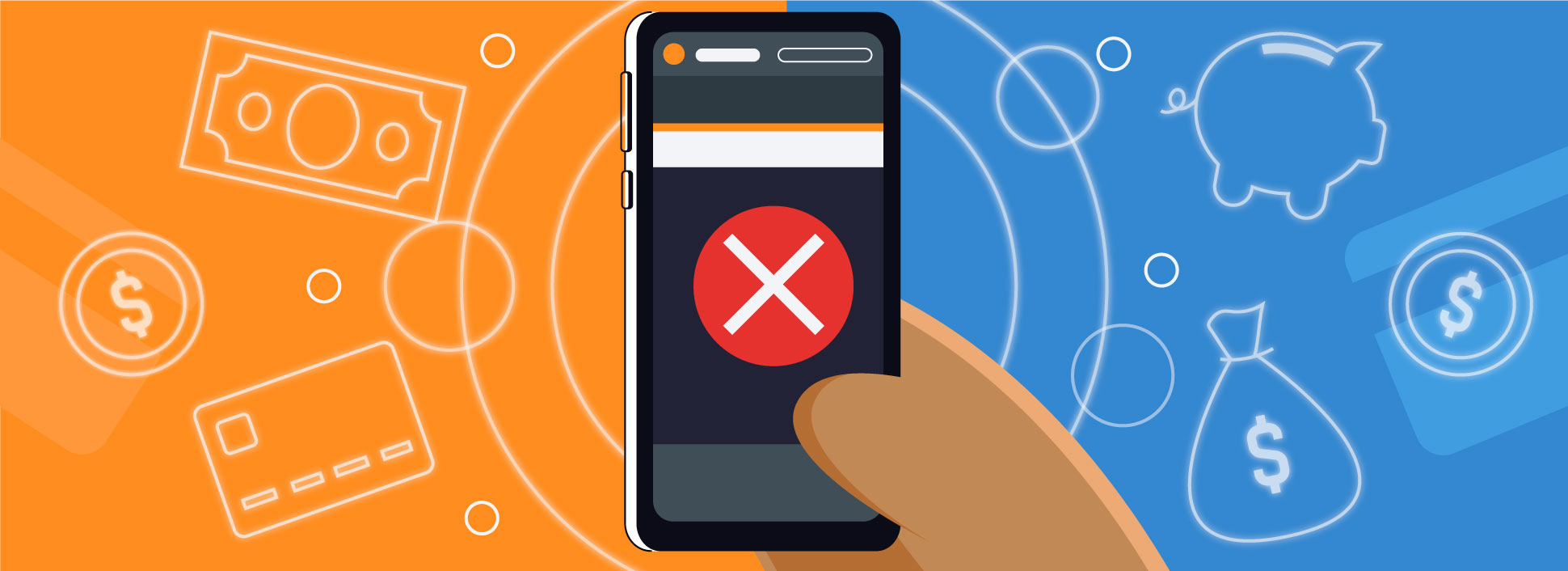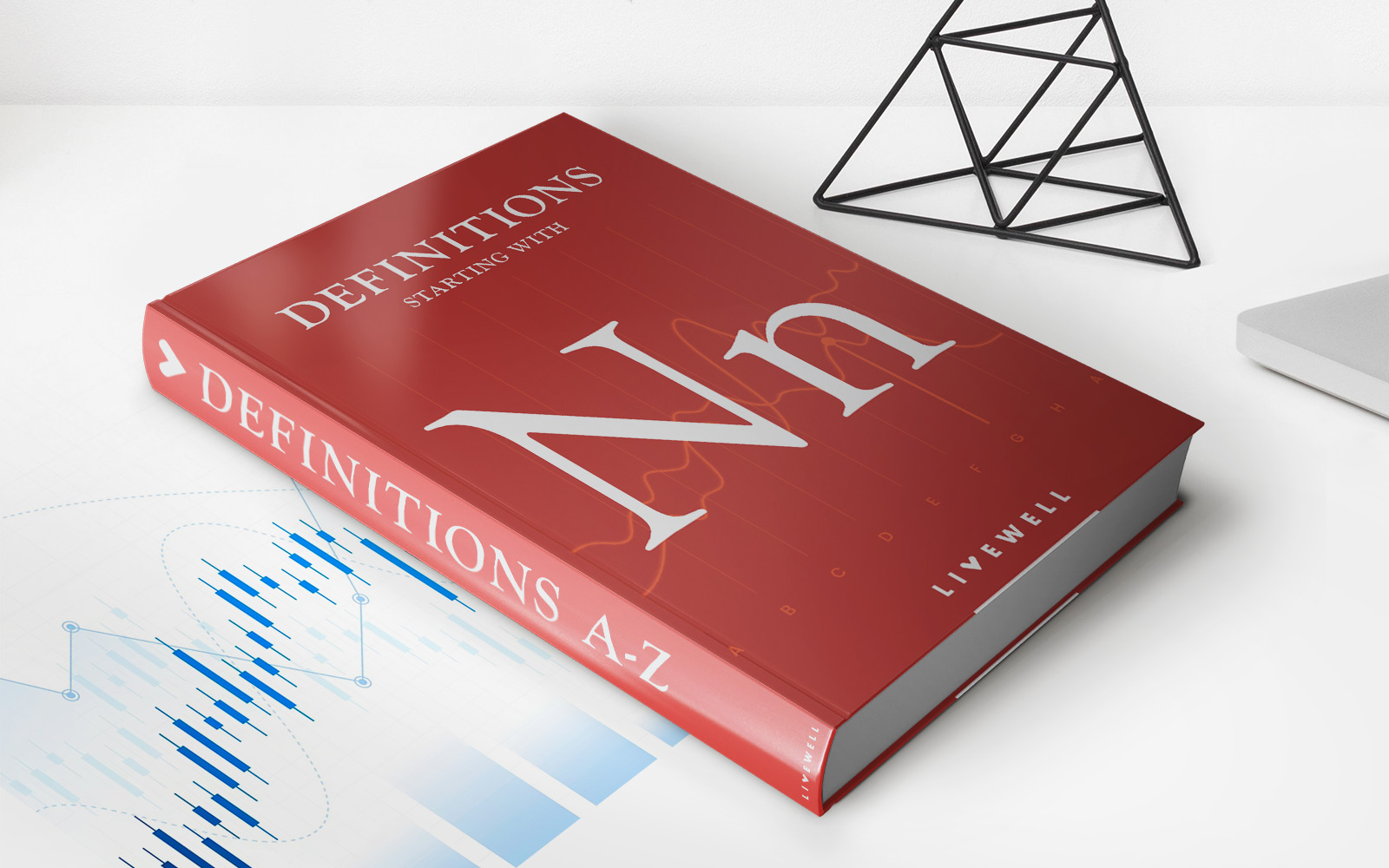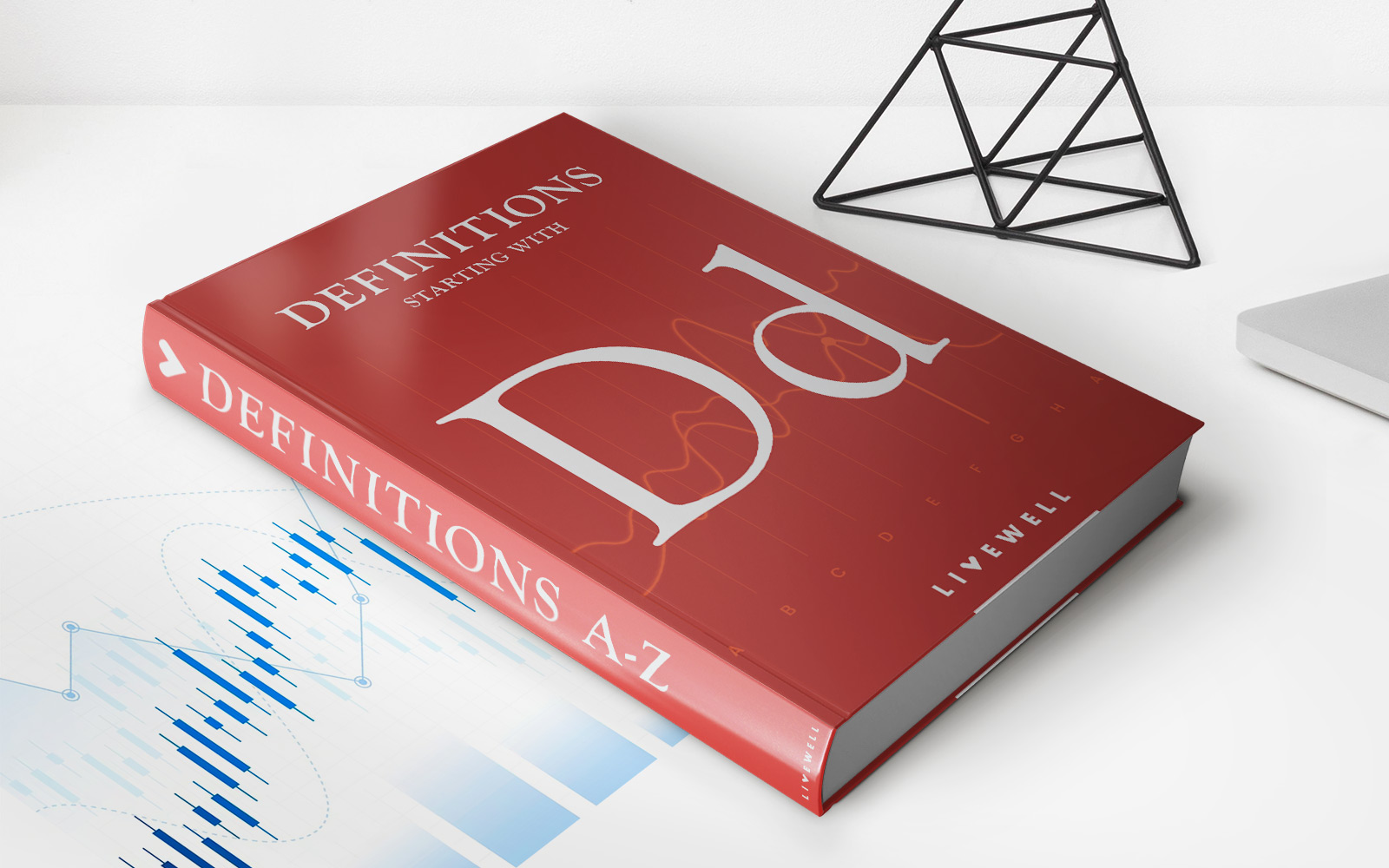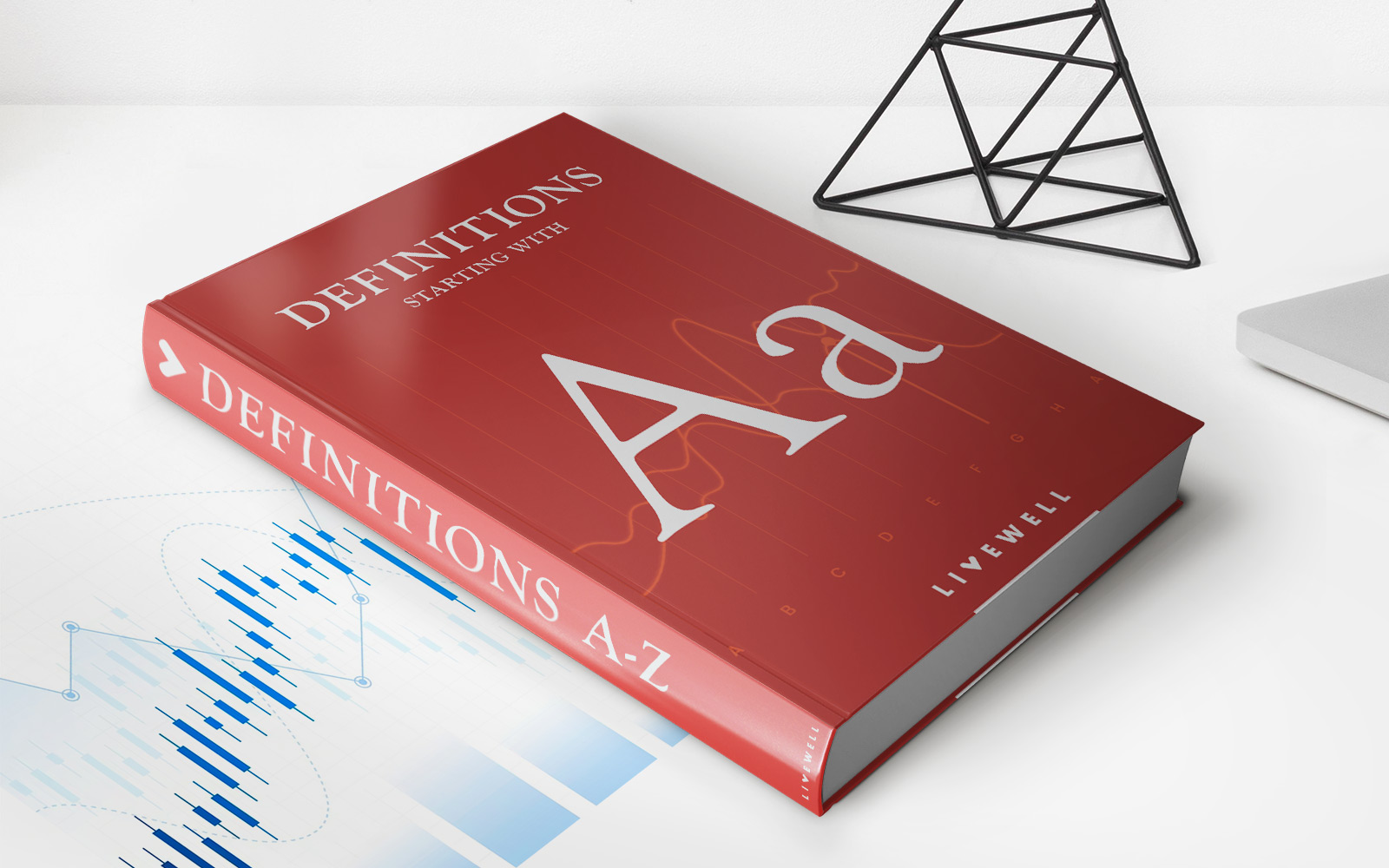

Finance
What Is Paid Up Additional Insurance?
Modified: February 21, 2024
Learn all about paid up additional insurance in the field of finance and how it can benefit your financial planning for the long term.
(Many of the links in this article redirect to a specific reviewed product. Your purchase of these products through affiliate links helps to generate commission for LiveWell, at no extra cost. Learn more)
Table of Contents
- Introduction
- Definition of Paid-Up Additional Insurance
- How Paid-Up Additional Insurance Works
- Benefits of Paid-Up Additional Insurance
- Drawbacks of Paid-Up Additional Insurance
- Comparison with Other Types of Insurance
- How to Purchase Paid-Up Additional Insurance
- Examples of Paid-Up Additional Insurance
- Conclusion
Introduction
In the world of insurance, there are various options available to individuals to protect themselves and their loved ones financially. One such option is paid-up additional insurance, which offers an alternative way to increase coverage without the need for purchasing a separate policy. Understanding what paid-up additional insurance is and how it works can help individuals make informed decisions when it comes to their insurance needs.
Paid-up additional insurance, also known as paid-up additions or PUAs, is a feature offered by some permanent life insurance policies. It allows policyholders to use dividends they receive from the insurance company to purchase additional coverage, without any additional premiums or medical underwriting requirements.
This insurance feature provides a way for policyholders to maximize the benefits of their life insurance policy by increasing the death benefit and cash value over time. It essentially allows individuals to leverage the dividends earned from the insurance company’s profitable operations to enhance their financial protection.
It is important to note that paid-up additional insurance is only available with participating whole life insurance policies. These policies provide both a death benefit and a cash value component, and the policyholder may be eligible to receive dividends based on the insurance company’s financial performance.
Now that we have a basic understanding of what paid-up additional insurance is, let’s explore how it works and the benefits it offers.
Definition of Paid-Up Additional Insurance
Paid-up additional insurance is a unique feature offered by some permanent life insurance policies. It allows policyholders to use the dividends earned from their policy to purchase additional coverage, increasing the death benefit and cash value of the policy.
Dividends are a portion of the insurance company’s profits that are distributed to policyholders of participating policies. Instead of receiving dividends in cash, policyholders have the option to use these dividends to purchase paid-up additional insurance as a form of reinvestment.
When policyholders opt to use their dividends for paid-up additional insurance, the additional coverage purchased is considered “paid-up,” meaning that it is fully paid for and does not require any additional premium payments. This can help policyholders enhance the value of their policy without any extra financial burden.
Paid-up additional insurance is typically added to the base policy, which means that it shares the same policy terms and conditions. However, it provides an additional layer of coverage on top of the base policy’s death benefit and cash value.
One key advantage of paid-up additional insurance is that it allows for the compounding of benefits over time. As the policyholder continues to receive dividends and reinvest them in paid-up additional insurance, the death benefit and cash value of the policy increase. This can provide significant financial protection for the policyholder and their beneficiaries.
It is important to note that the availability and terms of paid-up additional insurance can vary between insurance companies and policies. Some policies may offer the option of purchasing paid-up additional insurance at specific intervals, such as annually or every few years. Others may have restrictions on the maximum amount of paid-up additional insurance that can be purchased.
Overall, paid-up additional insurance offers policyholders the opportunity to enhance their life insurance coverage without incurring any additional premiums. It is a valuable feature that can provide peace of mind and financial security for policyholders and their loved ones.
How Paid-Up Additional Insurance Works
Paid-up additional insurance works by allowing policyholders to use the dividends they receive from their participating whole life insurance policy to purchase additional coverage. Here’s a step-by-step breakdown of how it works:
- Policyholder receives dividends: Participating whole life insurance policies typically earn dividends based on the insurance company’s financial performance and policyholder’s participation in the profits. These dividends can be received in cash or used for various purposes, including purchasing additional coverage through paid-up additional insurance.
- Option to purchase paid-up additional insurance: When policyholders receive dividends, they have the option to redirect those dividends towards purchasing paid-up additional insurance. This allows the policyholder to increase their death benefit and cash value without any additional out-of-pocket expenses.
- Paid-up additional insurance is added to the policy: The amount of coverage purchased through paid-up additional insurance is added on top of the existing death benefit and cash value of the base policy. This means that the policyholder now has increased financial protection and potential for greater growth in the policy’s cash value.
- No additional premiums required: One of the advantages of paid-up additional insurance is that it is fully paid for using the dividends earned from the policy. Policyholders do not need to pay any additional premiums to maintain the paid-up additional coverage. This can be a significant benefit as it allows policyholders to enhance their policy without any extra financial burden.
- Increased financial protection: By utilizing paid-up additional insurance, policyholders can increase the death benefit of their policy, which means that their beneficiaries will receive a larger payout in the event of their death. Additionally, the cash value of the policy also increases, providing potential for greater savings and access to funds in the future.
It is important to note that the dividends received and the amount of paid-up additional insurance that can be purchased may depend on factors such as the insurance company’s performance, the policyholder’s participation in the profits, and the terms of the specific insurance policy.
Paid-up additional insurance can be a valuable tool for policyholders to enhance the value of their life insurance policy without any additional financial obligations. By leveraging the dividends earned from their policy, individuals can enjoy increased financial protection and potential for growth. It is a win-win situation that allows policyholders to make the most of their life insurance coverage.
Benefits of Paid-Up Additional Insurance
Paid-up additional insurance can offer several benefits to policyholders. Here are some key advantages of incorporating paid-up additional insurance into a life insurance policy:
- Increased coverage: One of the primary benefits of paid-up additional insurance is the ability to increase the death benefit of the policy. By using dividends to purchase additional coverage, policyholders can provide their beneficiaries with a larger payout in the event of their death. This increased coverage can provide greater financial security and peace of mind for the policyholder and their loved ones.
- Enhanced cash value growth: Another advantage of paid-up additional insurance is the impact it has on the cash value component of the policy. By reinvesting dividends into additional coverage, policyholders can boost the growth of the policy’s cash value over time. This can lead to greater savings and potential access to funds through policy loans or withdrawals in the future.
- No additional premium payments: Unlike other forms of insurance coverage, paid-up additional insurance does not require policyholders to make additional premium payments. The coverage is fully paid for using the dividends earned from the policy. This can be highly beneficial as it allows policyholders to enhance their coverage without any extra financial burden.
- Flexibility and control: Paid-up additional insurance provides policyholders with flexibility and control over their life insurance policy. They have the choice to use their dividends for additional coverage or opt for other options, such as receiving dividends in cash. This flexibility allows policyholders to tailor their life insurance policy to meet their evolving needs and financial goals.
- Potential for future dividends: By increasing the cash value of the policy through paid-up additional insurance, policyholders may also enhance their potential to earn future dividends. As the policy’s cash value grows, it becomes eligible for a share of the insurance company’s profits. This can result in a cycle of increasing cash value, higher dividends, and further growth in coverage.
Overall, paid-up additional insurance provides policyholders with the opportunity to maximize the benefits of their life insurance policy. It offers increased coverage, enhanced cash value growth, flexibility, and the potential for future dividends. By leveraging the dividends earned from the policy, individuals can enhance their financial protection while maintaining control over their life insurance policy.
Drawbacks of Paid-Up Additional Insurance
While paid-up additional insurance offers several advantages, it is important to consider the potential drawbacks before incorporating it into a life insurance policy. Here are some potential drawbacks to be aware of:
- Dependence on dividends: Paid-up additional insurance relies on the receipt of dividends from the insurance company. The availability and amount of dividends can vary based on the company’s financial performance. If the insurance company experiences poor financial results, the dividends may decrease or even be eliminated. This can impact the ability to continue purchasing paid-up additional insurance in the future.
- Reduction in cash value usage: By using dividends to purchase paid-up additional insurance, the policyholder is directing those funds away from other potential uses, such as withdrawing cash value, taking out policy loans, or paying future premiums. This may reduce the flexibility and access to cash value in the policy, especially in the early years when the cash value may be lower.
- Restricted policy terms: Paid-up additional insurance is typically added to the base policy and shares the same terms and conditions. This means that any restrictions or limitations that apply to the base policy also apply to the additional coverage. For example, if the base policy has a waiting period for certain benefits, the paid-up additional insurance will also be subject to the same waiting period.
- Limited control over dividends: When dividends are used to purchase paid-up additional insurance, the policyholder gives up control over those funds. The funds are essentially locked into the additional coverage and cannot be accessed or used for other purposes. This lack of control may not be desirable for individuals who prefer to have more flexibility with their dividend payouts.
- Potential for overestimating needs: While having extra coverage through paid-up additional insurance may sound appealing, it is important to carefully assess one’s insurance needs. Purchasing more coverage than necessary can result in higher premiums and may not align with the policyholder’s financial goals or budget. It is essential to evaluate one’s insurance needs and consult with a financial advisor or insurance professional to make an informed decision.
It is crucial for individuals to weigh the advantages and drawbacks of paid-up additional insurance based on their specific circumstances and goals. Evaluating the potential drawbacks can help individuals make an educated decision about whether paid-up additional insurance aligns with their financial needs and preferences.
Comparison with Other Types of Insurance
When considering paid-up additional insurance, it’s essential to understand how it compares to other types of insurance. Here’s a comparison of paid-up additional insurance with two common types of insurance: term insurance and whole life insurance.
Term Insurance:
Term insurance is a type of life insurance coverage that provides protection for a specific period, typically 10, 20, or 30 years. Here are some key differences between paid-up additional insurance and term insurance:
- Paid-up additional insurance is a feature available in permanent life insurance policies, while term insurance is a standalone policy with no cash value component.
- Paid-up additional insurance allows policyholders to use dividends to increase the death benefit and cash value of the policy, while term insurance offers a fixed death benefit for a specific term.
- Term insurance typically has lower initial premiums compared to permanent life insurance policies, including those with paid-up additional insurance.
- Term insurance does not offer the potential for cash value growth or access to policy loans like permanent life insurance policies with paid-up additional insurance.
- Paid-up additional insurance provides coverage for the lifetime of the policyholder, whereas term insurance coverage ends at the end of the term unless renewed or converted.
Whole Life Insurance:
Whole life insurance is another type of permanent life insurance that, like paid-up additional insurance, offers a death benefit and a cash value component. Here’s a comparison between paid-up additional insurance and whole life insurance:
- Paid-up additional insurance allows policyholders to increase coverage using dividends, while whole life insurance offers a fixed death benefit.
- Paid-up additional insurance is a flexible option that can be added to a whole life insurance policy, whereas whole life insurance is a comprehensive policy with a consistent premium and coverage amount.
- Paid-up additional insurance does not require additional premium payments beyond the initial policy premiums, while whole life insurance requires regular premium payments.
- Whole life insurance policies typically have higher initial premiums compared to policies with paid-up additional insurance.
- Paid-up additional insurance can provide potential for greater cash value growth and access to policy loans or withdrawals, whereas whole life insurance offers guaranteed cash value growth.
Ultimately, the choice between paid-up additional insurance, term insurance, and whole life insurance depends on an individual’s financial goals, budget, and risk tolerance. Consulting with a financial advisor or insurance professional can help assess individual needs and determine the most suitable type of insurance coverage.
How to Purchase Paid-Up Additional Insurance
To purchase paid-up additional insurance, individuals must first obtain a participating whole life insurance policy. Here are the key steps involved in purchasing paid-up additional insurance:
- Research and choose a reputable insurance company: Start by researching and comparing insurance companies that offer participating whole life insurance policies. Look for companies with a strong financial rating, good customer reviews, and a history of consistently paying dividends to policyholders.
- Consult with an insurance professional: Reach out to an insurance professional who specializes in life insurance. They can provide guidance on the available options, help assess your insurance needs, and recommend suitable policies with paid-up additional insurance features.
- Review policy terms and conditions: Carefully review the terms and conditions of the participating whole life insurance policy, particularly the provisions related to paid-up additional insurance. Understand the eligibility criteria, dividend calculations, and any limitations or restrictions that may apply.
- Choose the appropriate dividend option: When purchasing a participating whole life insurance policy, policyholders have the option to choose how they want to receive dividends. Select the option that allows dividends to be used for paid-up additional insurance, rather than receiving them in cash or applying them towards premium payments.
- Monitor dividends and purchase paid-up additional insurance: As the policyholder, keep track of the dividends received from the insurance company. If the option to purchase paid-up additional insurance is chosen, work with the insurance company or agent to initiate the process of using dividends to add the additional coverage to the policy.
- Review and adjust coverage over time: Regularly review the performance of the policy, including the death benefit, cash value, and dividends. As the policyholder’s needs change, consider adjusting the coverage by either purchasing more paid-up additional insurance or reducing it if deemed necessary.
It is important to note that the availability and terms of paid-up additional insurance may vary between insurance companies and policies. Some companies may offer more flexibility in how dividends can be used, such as using them for premium reductions or taking them in cash. Consulting with an insurance professional can help navigate the options and select the most appropriate solution for individual needs.
Remember to thoroughly understand the policy and seek clarification on any aspects that may be unclear before making a purchase. By working with a trusted insurance professional, individuals can make informed decisions and ensure that the purchased policy aligns with their financial goals and provides the desired level of coverage.
Examples of Paid-Up Additional Insurance
To provide a better understanding of how paid-up additional insurance works in practice, let’s explore a couple of examples:
Example 1:
Sarah is a 35-year-old professional who wants to secure her family’s financial future. She purchases a participating whole life insurance policy with a death benefit of $500,000. Over time, the insurance company declares dividends based on its profitability. Sarah chooses to use these dividends to purchase paid-up additional insurance.
After a few years, Sarah’s policy has accumulated $10,000 in dividends. Instead of receiving the dividends in cash or using them to pay premiums, she directs the insurance company to add the $10,000 worth of paid-up additional insurance to her policy.
As a result, Sarah’s total death benefit increases to $510,000, providing her family with extra financial protection. Additionally, her policy’s cash value grows, allowing her to potentially access funds in the future through policy loans or withdrawals.
Example 2:
John is a 45-year-old business owner who has been paying premiums into his participating whole life insurance policy for several years. His policy has been performing well, and the insurance company consistently declares annual dividends.
Instead of receiving the dividends in cash, John chooses to purchase paid-up additional insurance. Each year, he reinvests the dividends back into his policy to increase his coverage. This allows John to gradually build up the cash value of his policy while enjoying the added financial protection of the increased death benefit.
Over time, the paid-up additional insurance has significantly enhanced John’s life insurance policy. He now has a larger death benefit, ensuring his family’s financial security in the event of his passing, as well as a substantial cash value that can be used for various purposes, such as supplementing retirement income or meeting unexpected expenses.
These examples highlight how paid-up additional insurance can be used to augment the death benefit and cash value of a permanent life insurance policy. By leveraging dividends, policyholders can progressively enhance their coverage and financial stability without incurring additional premiums.
It is important to remember that the specific outcomes and benefits of paid-up additional insurance may vary depending on factors such as the insurance company’s performance, the policyholder’s participation in dividends, and the terms of the individual policy.
Conclusion
Paid-up additional insurance offers a unique and valuable option for policyholders to enhance their life insurance coverage without the need for additional premium payments. By utilizing dividends earned from a participating whole life insurance policy, individuals can increase the death benefit and cash value of their policy, providing greater financial protection and potential for growth.
Throughout this article, we have explored the definition of paid-up additional insurance, how it works, and the benefits it offers. We have also discussed the drawbacks of this type of insurance and compared it to other common types of coverage, such as term insurance and whole life insurance.
Furthermore, we provided insight into the process of purchasing paid-up additional insurance, emphasizing the importance of conducting research, consulting with insurance professionals, and understanding the terms and conditions of the policy.
Finally, we shared examples of how paid-up additional insurance can positively impact policyholders’ coverage and financial well-being, showcasing the potential to increase the death benefit and cash value over time.
When considering life insurance options, paid-up additional insurance is a notable feature to explore, particularly for those seeking permanent coverage with the potential for growth. It provides an avenue for individuals to make the most of their dividends and maximize the benefits of their life insurance policy.
Remember, each person’s insurance needs and goals are unique, which is why consulting with a financial advisor or insurance professional is essential to determine the most suitable insurance solutions.
Overall, paid-up additional insurance offers a way to enhance coverage and financial security, allowing individuals to protect their loved ones and build a solid foundation for their future.



